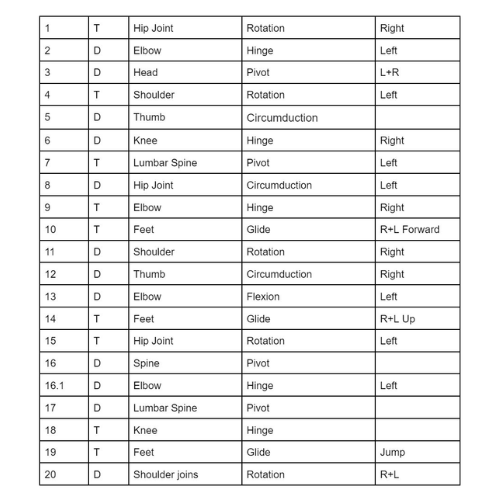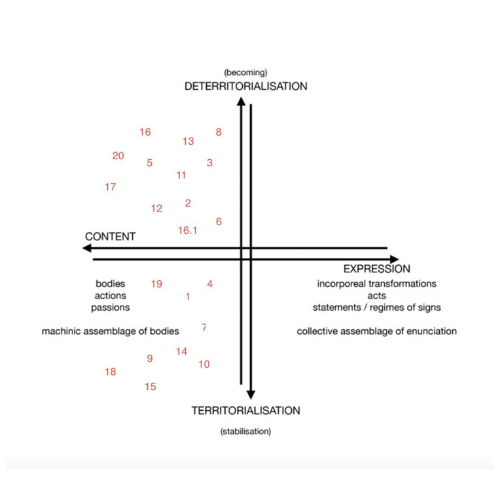1. Gilles Deleuze and Félix Guattari, A Thousand Plateaus: Capitalism and Schizophrenia, trans. by Brian Massumi (Minneapolis: University of Minnesota Press, 1987), p. 88.
2. Paulo de Assis and Paolo Giudici, eds, Machinic Assemblages of Desire: Deleuze and Artistic Research 3 (Leuven: Leuven University Press, 2021), p. 16.
The conceptualisation on dance began with a question on how one mobilises professional competence and personal agency (especially in a performing space) in order to create a possibility of flow and interruption through dance. Following this task resulted in composing a score, (or it might be more accurate to name it a map) based on the mobility of the synovial joints for they define both, the movement and the limitation - the flow and the interruption.
The score included five types of movement: rotation, hinge, pivot, glide and circumduction. In the next step the order and the body parts were defined, while the direction and speed remained open.It is clear that such a score is a figure of thought rather than a realistic organisational order. To start with, a mobilization of such joints is not possible in isolation, secondly the movement is not defined in time and space, leaving it open to a possibility and each of the reactions produces additional movement that exist simultaneously to the score.
The next step included evaluation of this score against the axis of stabilization and becoming, marking each element with T for Territorialisation and and D for Deterritorialization:
“On a first, horizontal, axis, an assemblage comprises two segments, one of content, the other of expression. (....) Then on a vertical axis, the assemblage has both territorial sides, or reterritorialized sides, which stabilize it, and cutting edges of deterritorialization, which carry it away.” 1
Guided by de Assis’s 2 graphical representation of these structure each step was placed between the above mentioned axis system.
This process helped to escape the primarily linear structure. The improbability of executing the tasks of the score map led to the necessary momentary adjustments that produced additional movement structures. These unplanned but consequent solutions become integrated undefined parts of the structure that would be tracked on the right side of the graph. (in the axis of expression)
One could approach this dance as inclusive of the three components of the assemblage: it deals with the material and energetics through movement, it integrates the semiotic component by the means of score that acts as operational code, lastly it allows for corporeal individuation by decentering the movement from the agency of a dancer through challenging the sovereignty of the brain with an impossible task.

